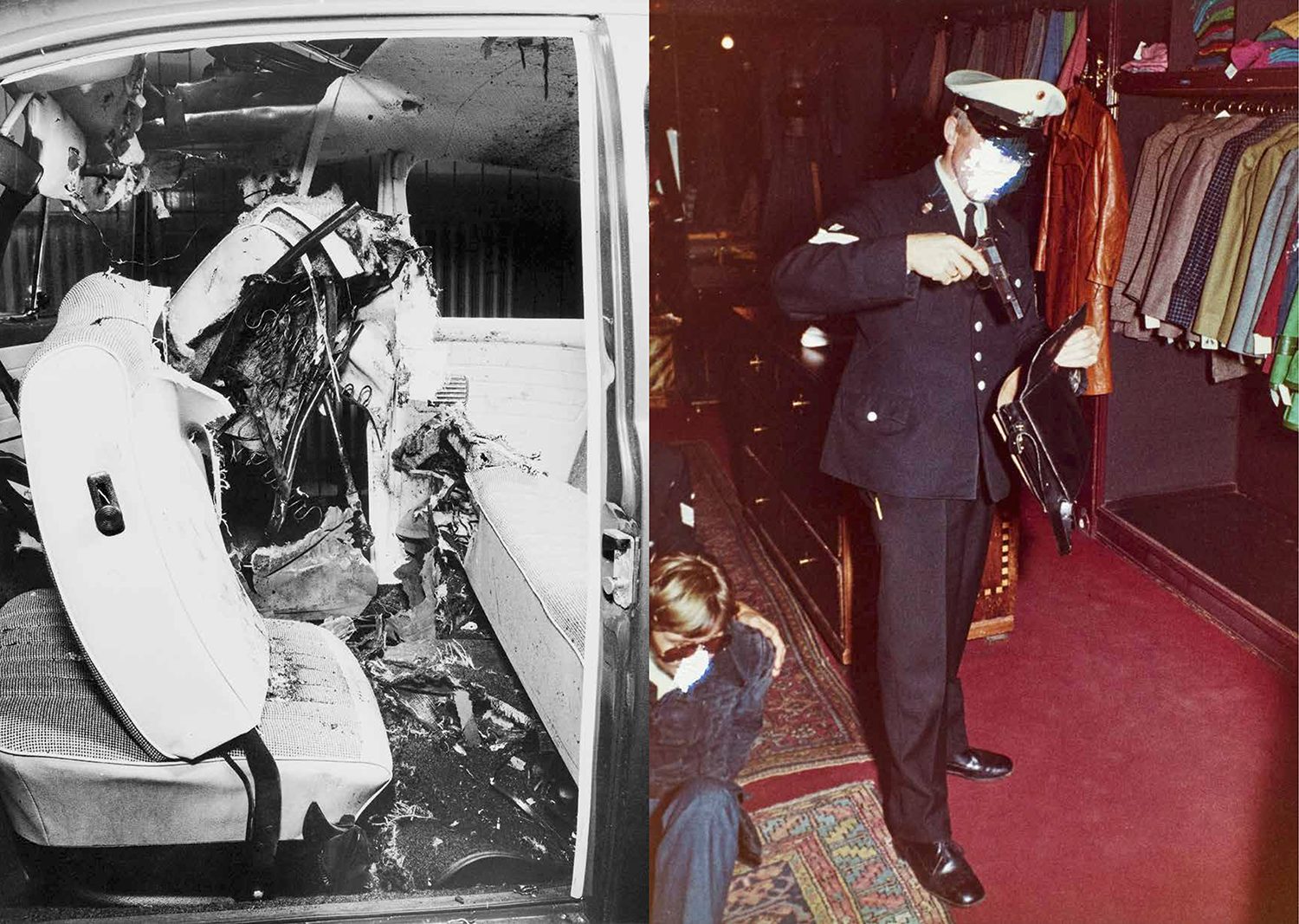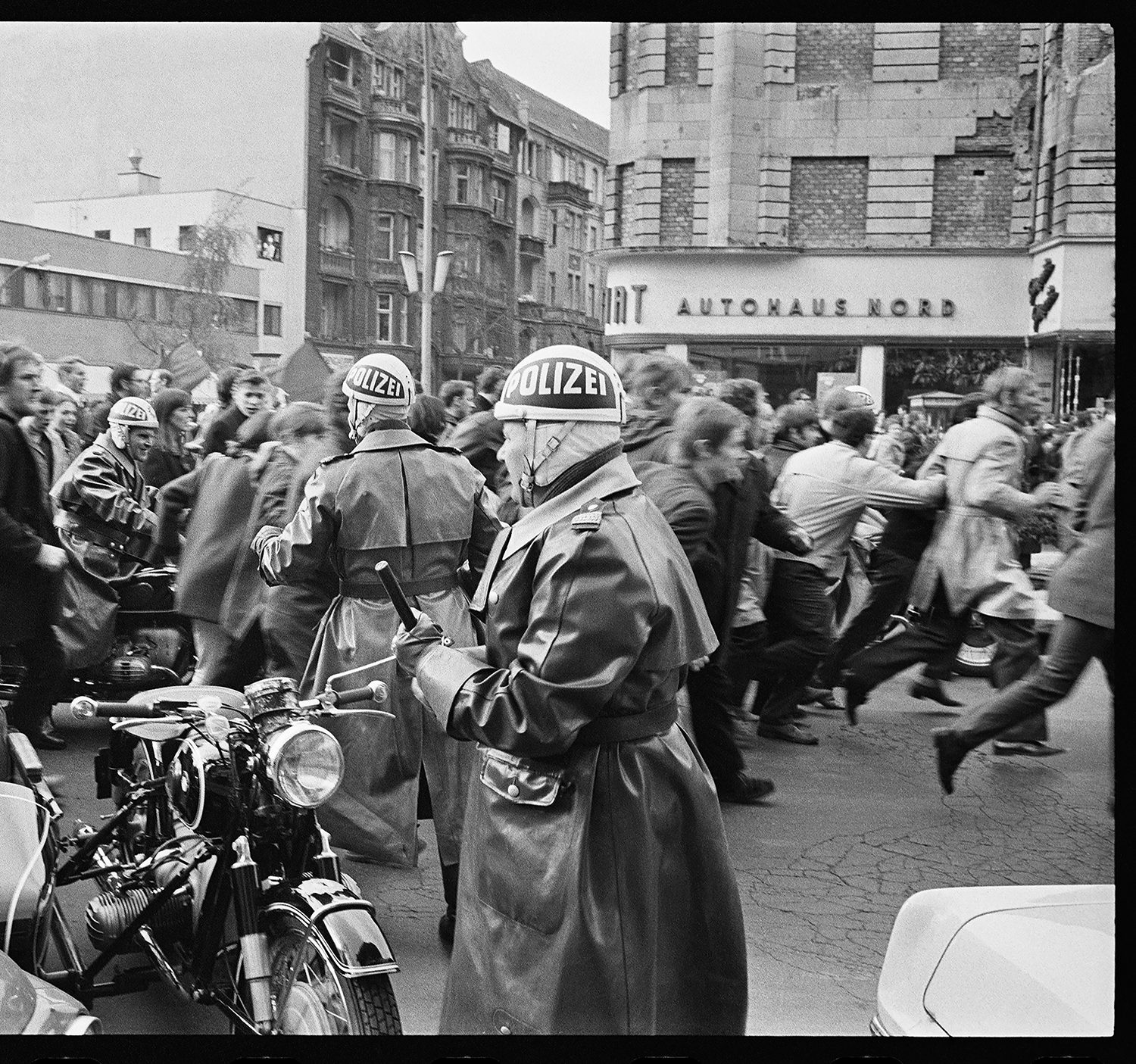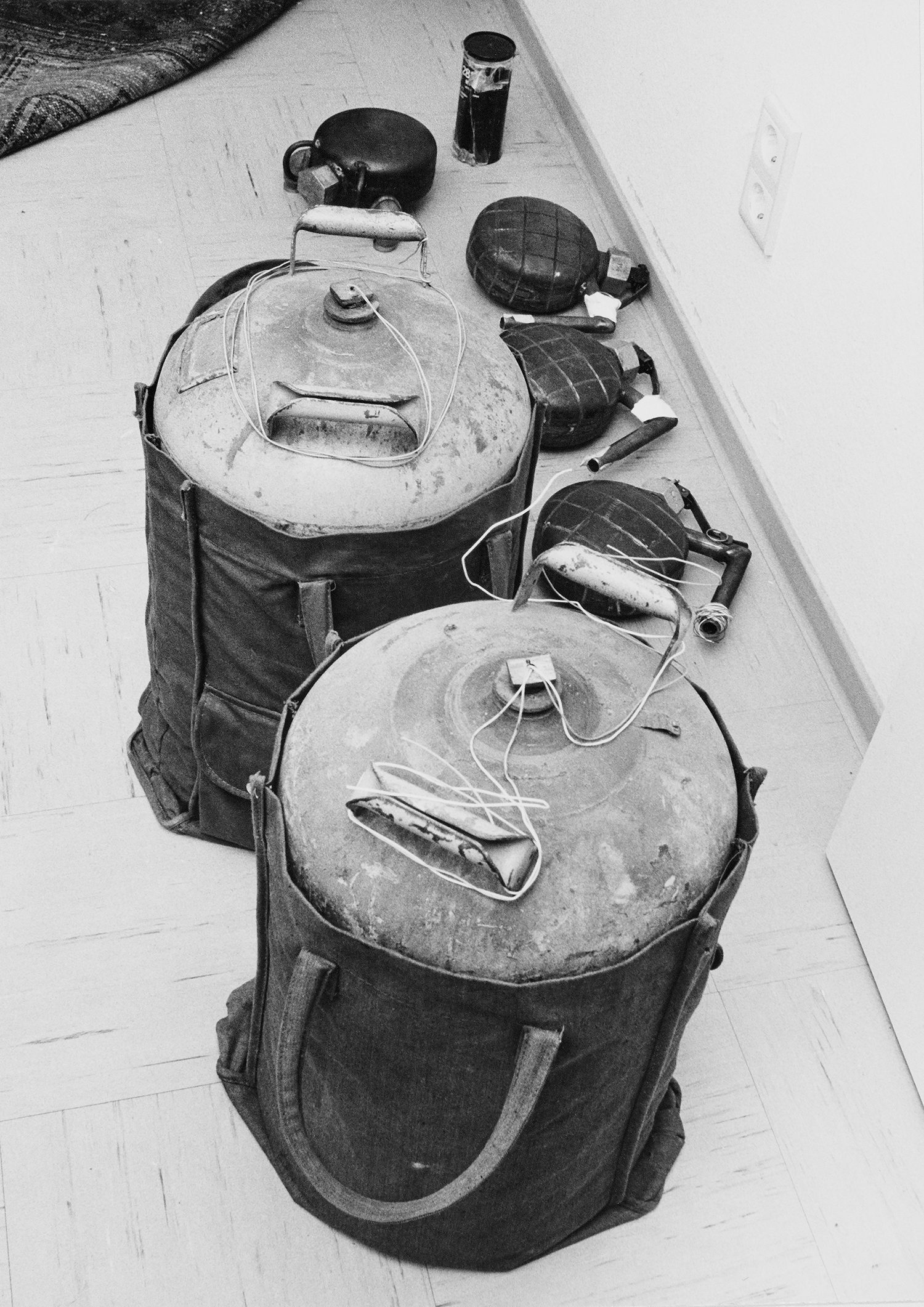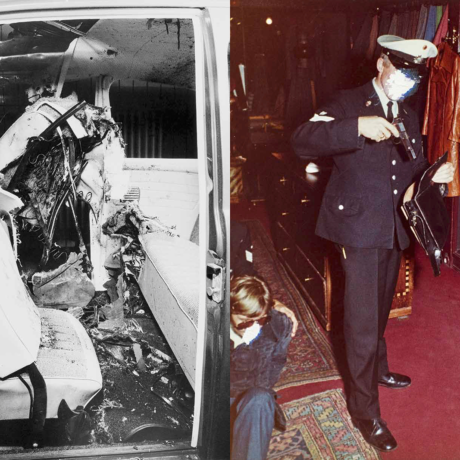
German artist Arwed Messmer is a photographer, but he doesn’t take pictures: instead, he works with images that already exist. Not, he says, to “illustrate the past”—instead, the “pictures themselves are the theme” of his work, inviting the viewer to discover what the images tell us about the circumstances in which they were made, and how with the power of hindsight and temporal distance, we may view them totally differently today to the day they were made.
Messmer was one of the nominees for this year’s Deutsche Börse Photography Foundation Prize, the winner of which was announced last week. His RAF – No Evidence / Kein Beweis is currently on show with the other shortlisted artists’ work at The Photographers’ Gallery in London. The piece comprises images of the Baader-Meinhof Group or Red Army Faction (RAF), including shots taken by police photographers of demonstrations and crime scenes as well as pictures used for identification purposes. “What fascinates us so much about the portraits today,” he says, is how they feel so contemporary, even fifty years on. “This is first and foremost the colourfulness, which automatically creates a certain contemporary feel, the coherent recording technique and the emphasis on the typological. Still, the photos could also be taken from a current advertising campaign for retro fashion.”

What was it that interested you in focusing on the Baader-Meinhof Group? How important is it for us to understand more about them now, in 2019?
The Baader-Meinhof Group or the Red Army Faction is of central importance for post-war West German history. De facto, in almost all of my photographic works, I deal with fundamental but nevertheless stirring themes of recent German history. By stirring or provocative themes, I mean those developmental processes that have had a lasting influence on German society, changing it in the long term and ultimately making the united Germany after 1989 what it is today. I don’t know whether with RAF – No Evidence we can really understand and learn something from West German left-wing terrorism in historical-political terms. In general, I am rather reluctant to judge what photography or art can achieve in this respect. I was surprised by the willingness to use violence and I always had the feeling of being very close to history. That sometimes felt very dangerous and was exhausting.

Can you tell me more about the image of the men in women’s clothing? What’s the symbolism of the fact they’re in drag?
The colour full-body portraits were taken in a photo studio of the Berlin (political) police in August 1967, after the portrayed had been arrested as participants in a political performance. Some of them were members of the famous “Kommune I”, others were sympathizers of the shared ideas. With their performance, they had disturbed the funeral service of a deceased resistance fighter who had fought against the Nazi regime, in order to achieve maximum attention. Really, the demonstration was about the release of a fellow comrade from police custody. Although “Kommune I” advocated for free love and the overcoming of the traditional family structure, the question of new gender roles, which might have been drawn from cross-dressing, was probably only one of the tools for effective provocation, rather than a conscious reflection or questioning of roles. The approach for the viewer and possible readings are manifold… That openness is what makes them so valuable. But for me they are also the personalized and typologised image of a youth and protest culture—those who wanted to change society democratically from within.
“Is it possible to reveal everything without showing everything?”
When is photography not photography? What’s your take on the idea of authorship in art?
When working with utilitarian, purely functional image documents, for which there is an author but no image author in the classical sense, this is of course an interesting question. The volumes I use are not the result of investigative research—the supposed coup of discovery is not my focus. The pictorial material that interests me has usually been accessible for a long time and is also known, at least in professional circles. The artistic process is about the “how you look at it”—in which context I, as the author, place the images, perhaps for the first time “to develop” the latent image of the archive material after its original function has long since expired. That’s why I already question the original use of the image documents in the title of the work. This gives rise to further questions, such as the appropriate form of presentation. In this case, pictorial ethical dimensions also play a major role. Why do I show explicit content or not, and if so, in what context? As a historical print, as a print from the digital copy of the original negative, or as an iconic image in the original edition of a magazine? Is it possible to reveal everything without showing everything?

Where do you blur the line between historian and artist?
Most historians use pictorial documents to illustrate their theories, they serve them as pictorial evidence. What is relevant for them is the event depicted, the process, what the pictorial content (apparently) proves.
As an artist, I start from the picture itself, which is a contrary approach. Before my final decision to develop a work on the Red Army Faction in 2015, a relatively extensive preliminary research preceded the actual research. With this I wanted to clarify the access possibilities to the relevant sources and assure myself in advance that I would be allowed to work with them later in great freedom. I am not looking for an illustration of my topic, but ask myself whether a topic that fascinates me can be illustrated at all.
“As an artist, I start from the picture itself, which is a contrary approach”
You’ve said before that you “want to create new ways of reading images”. Can you elaborate on that?
By this I mean to make visible the different readings that images carry within them. This is done by deciding on the form, editing and, if necessary, digital processing. All of this can lead to a certain fictionalization of the source material, on the other hand it increases its documentary readability. What fascinates me are the possible existing meta-levels of the material, the new possibilities of viewing images retrospectively, reaching far beyond the original reason of taking the photograph. In one of my projects I use the extensive pictorial work produced by the border guards of the GDR depicting the Berlin Wall. This extensive image collection was made to give the engineers, who were to further perfect the wall, a status overview for their planning. The starting point was a very diverse collection of more than 6,000 negatives and prints in technical and motivic terms. Many different people must have been involved in the creation. From this I digitally generated about 1000 horizontal sequences, which show the complete 160 km course of the wall around West Berlin. The result is a building monograph, a seemingly coherent documentation of the developer, which never existed before.
The Deutsche Börse Photography Foundation Prize 2019
Until 2 June 2019 at The Photographers’ Gallery London
VISIT WEBSITE





